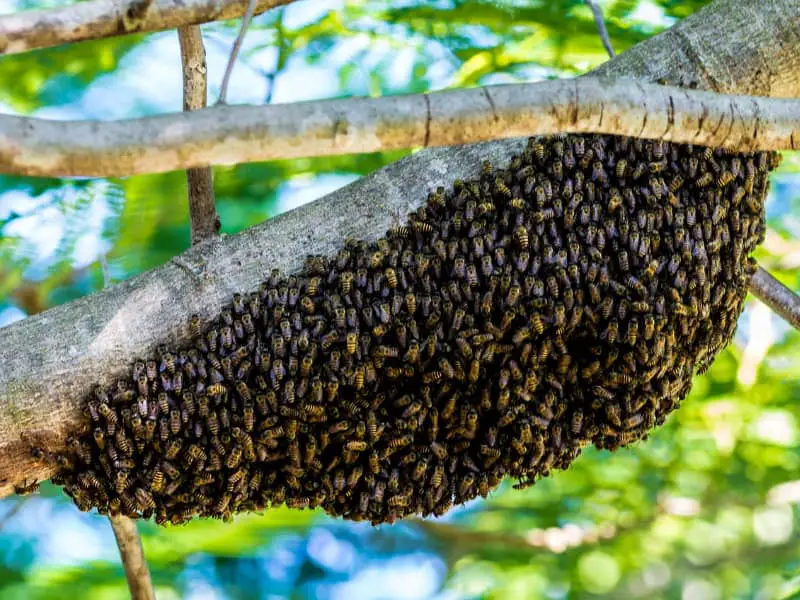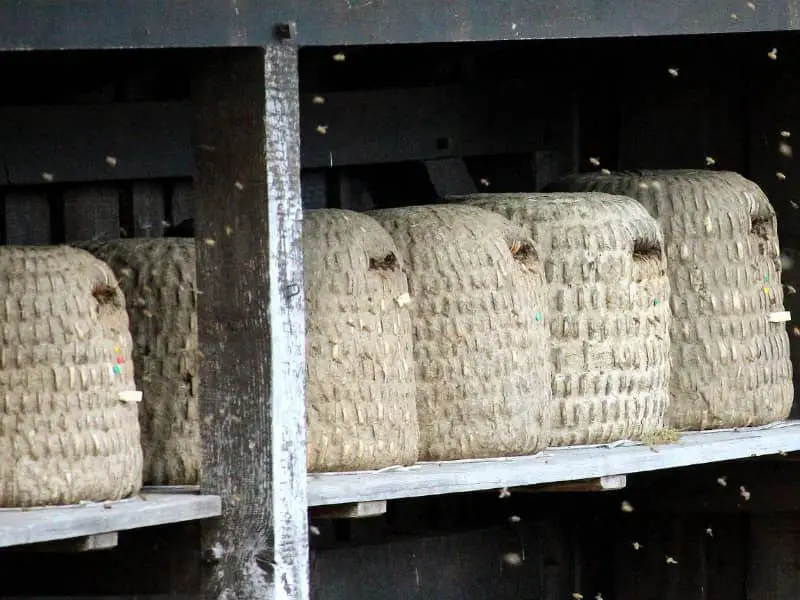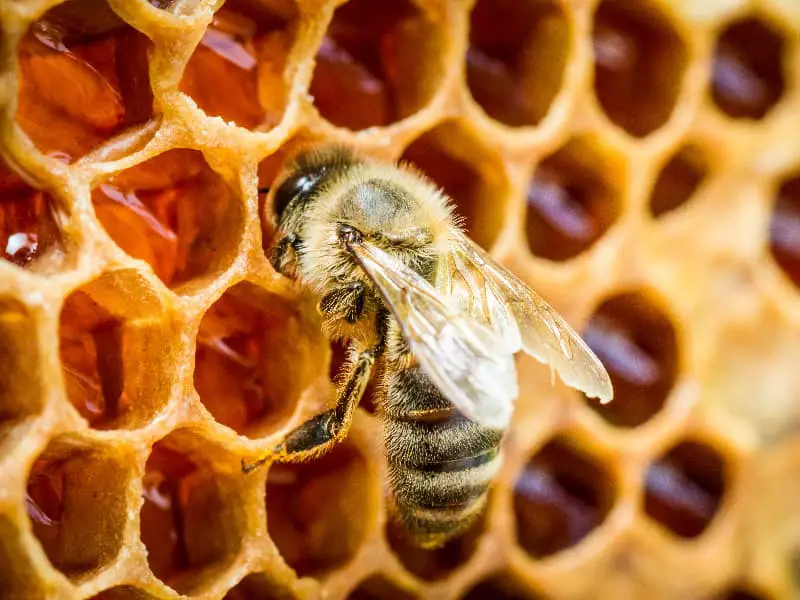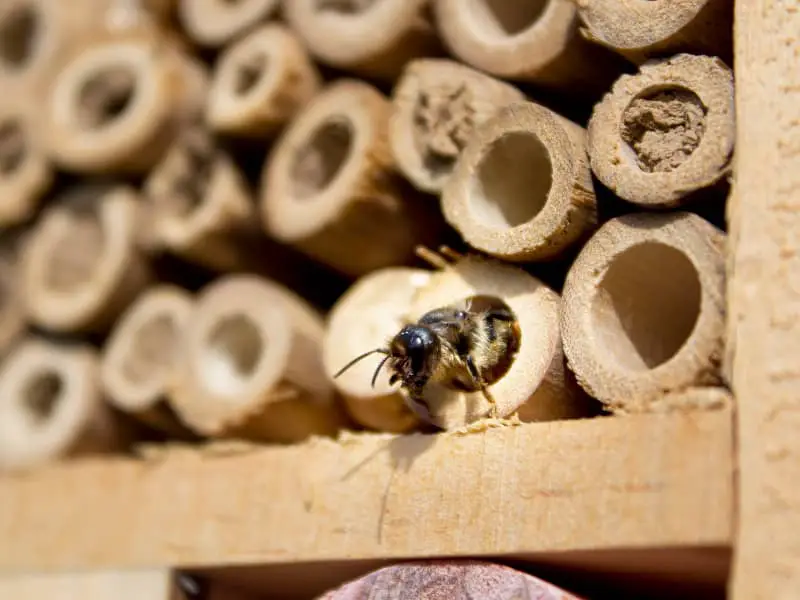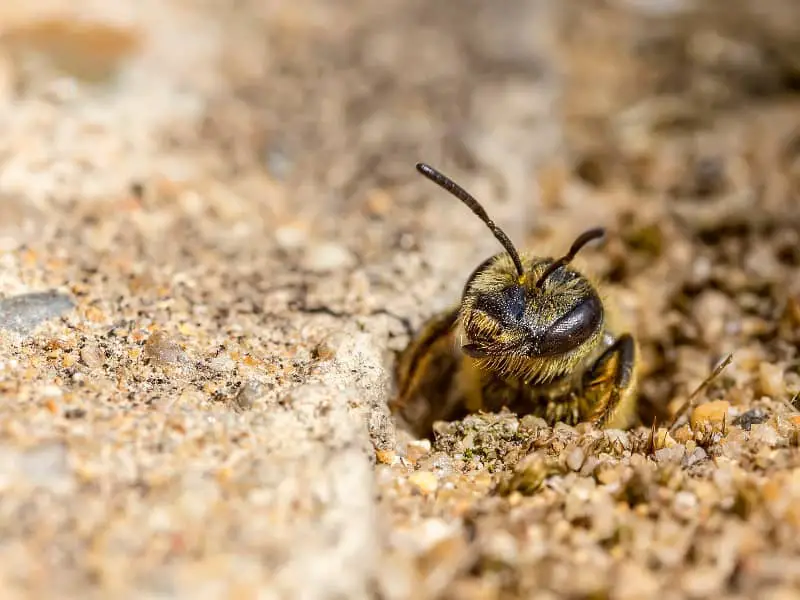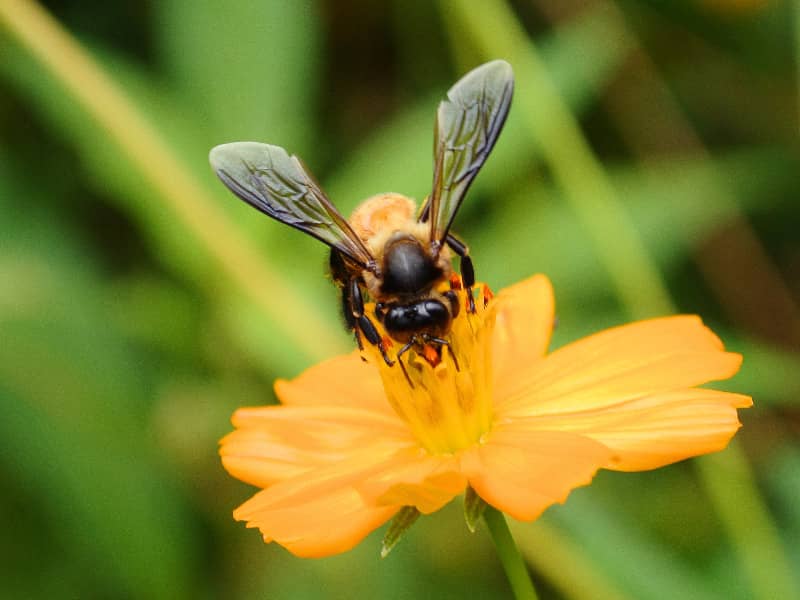
Why do bees die when they sting?
There are many fascinating facts and mysteries in the dazzling world of insects. One of these mysteries, which has always aroused the curiosity of nature lovers and scientists alike, is the fate of the honey bee after a sting. Why does the bee have to die after stinging? What is the purpose of this seemingly self-destructive act? Immerse yourself with us in the mysterious world of bees and find out what lies behind this phenomenon.
Anatomy of a bee sting
When a bee stings, it is a last resort for the insect. But what exactly happens when a bee stings? A closer look reveals that the bee's stinger is equipped with tiny barbs. When a bee stings, the stinger anchors itself firmly in the victim's flesh. In an attempt to free itself, the bee tears out its stinger along with part of its digestive tract, muscles and nerves.
This serious loss inevitably leads to the death of the animal. But why is the bee's stinger constructed in this way? Could it not also be equipped with a smooth stinger that enables it to flee after a sting?
The evolution of the bee sting
Evolution has shaped bees over millions of years. Their stinging weapon did not develop by chance. The stinging, serrated structure of the bee sting ensures that the venom penetrates deep into the victim, where it has maximum effect. The bee's venom contains substances that cause pain and deter potential attackers.
It sends a clear message: "Stay away from my people!" But why has evolution made it so that the bee dies after stinging?
The good of the collective
Bees live in communities in which the welfare of the collective is placed above that of the individual. Each bee has a specific role in the colony. When a worker bee uses its stinger, it does so to defend its colony. The survival of the colony depends on the health and safety of the queen and the worker bees that gather food and maintain the hive.
A single insect sacrificing its life to fend off an intruder may seem tragic, but it serves the overarching goal of the community's survival. For a bee, the use of its sting is therefore a heroic act of selflessness.
But couldn't there be other ways to defend the stick without sacrificing life?
Defense alternatives
There are actually many insects that do not risk their lives in defense. Wasps, for example, can sting several times without dying. Their sting is smooth and barbless, allowing them to easily pull it out of the victim's skin.
For bees, however, in the course of evolution, the self-sacrificing sting has proven to be the most effective method of defending the hive. By losing their lives, they not only send a message to the attacker, but also leave behind a scent. This pheromone alerts other bees and mobilizes them to defend themselves.
These biological processes and behaviors are the result of millions of years of evolution and adaptation. It is a fascinating example of how nature adapts to different challenges.
The question remains: Are there ways to avoid bee stings and minimize the risk to the animals?
Living together with bees
The best way to avoid bee stings is not to provoke bees. They may perceive quick movements, loud noises or intrusion in their vicinity as a threat. Bees are generally peaceful creatures that only sting when they feel threatened.
If you spot a beehive, you should keep your distance and avoid the area. Bees are essential for the pollination of plants and the production of honey. Peaceful coexistence between humans and bees is therefore beneficial for both sides.
Bee stings and humans
While for many people a bee sting is simply painful, the consequences for allergy sufferers can be fatal. A bee sting can trigger a severe allergic reaction, known as anaphylactic shock, in these people.
Why are some people allergic?
Allergies are reactions of the immune system to substances that are actually harmless. In the case of a bee sting, the immune system reacts excessively to the bee venom. Repeated contact can intensify this reaction, which means that someone who has previously "only" reacted to a bee sting with swelling could have a more serious reaction the next time.
The chemistry of bee stings
A bee sting is not only a physical injury, it also releases a cocktail of chemicals that cause pain and inflammation.
What does bee venom contain?
Bee venom is a mixture of proteins and peptides that can cause a variety of effects in the human body. The main components include melittin, phospholipase A2, hyaluronidase and histamine. These components work together to cause pain, swelling and redness.
Bee stings in medicine
Despite the obvious dangers of bee stings, people have used bee venom for therapeutic purposes throughout history.
How is bee venom used therapeutically?
Some traditional systems of medicine, such as traditional Chinese medicine, use bee venom to treat conditions such as arthritis and other inflammatory conditions. There has also been recent research into the potential anti-inflammatory and analgesic properties of bee venom.
Conclusion: Why do bees die when they sting?
The fate of a bee that dies after being stung is more than just an interesting biological phenomenon. It illustrates the incredible interplay of evolution, self-sacrifice and the survival of the collective. The bee sacrificing itself to protect its hive is a testament to the extraordinary adaptations found in the animal world.
The bee sting also offers a deep insight into the complex chemistry of bee venom and its potential therapeutic applications. While for some people the sting merely causes discomfort, for others it can have serious health consequences, underlining the importance of respect and understanding for these small creatures.
Finally, the global importance of bees reminds us how much our ecosystem and food security depend on these hard-working pollinators. A bee sting may cause us short-term pain, but it is the long-term health and survival of bees that is of paramount importance to us all.
In this realization lies the hope that we will learn to live more harmoniously with bees and appreciate their crucial role in our ecosystem.
Author

-
Garden animal - A life with nature
Welcome to my animal blog! My name is Dirk and I am happy to take you on my journey through the fascinating world of animals and gardening.
Born 54 years ago, I have had an insatiable curiosity for the animal world around me since childhood. Although I have moved professionally in other industries, my true passion has always been animals and nature. It is remarkable how a small garden has become such an important part of my life.
Many of my fondest memories are associated with the animals that share our home. Whether it's the curious squirrels that scurry across the trees in the morning, the colorful variety of birds that visit our feeders, or the busy bees and butterflies that pollinate our flowers, every moment with them is invaluable to me.
This blog is my contribution to share my experiences, discoveries and insights with like-minded people. Here I will share stories of unforgettable encounters with animals, give tips on gardening and creating wildlife-friendly habitats, and take you on my journeys through nature.
Thank you so much for being here!
Cordial,
Dirk aka garden animal
Last posts
- 27. February 2024PetsVeganes Hundefutter – Grün und Gesund?
- 18. January 2024ChickensOregano für Hühner
- November 27, 2023HamsterDiurnal hamsters
- November 24, 2023HamsterHamster hammock

